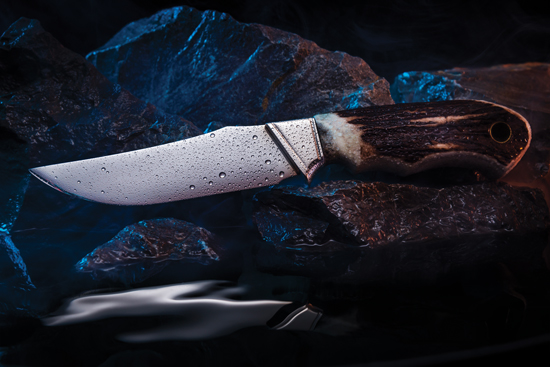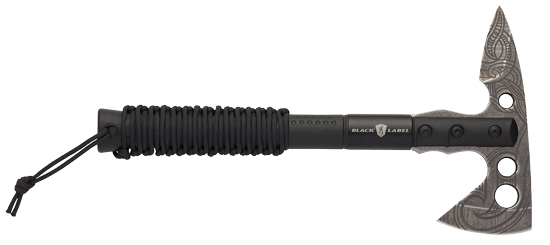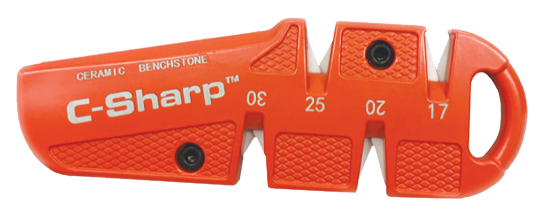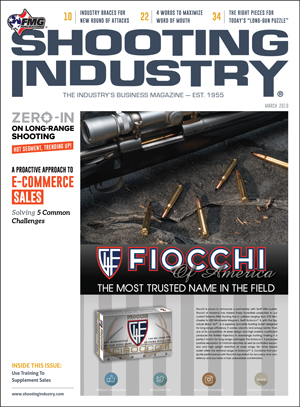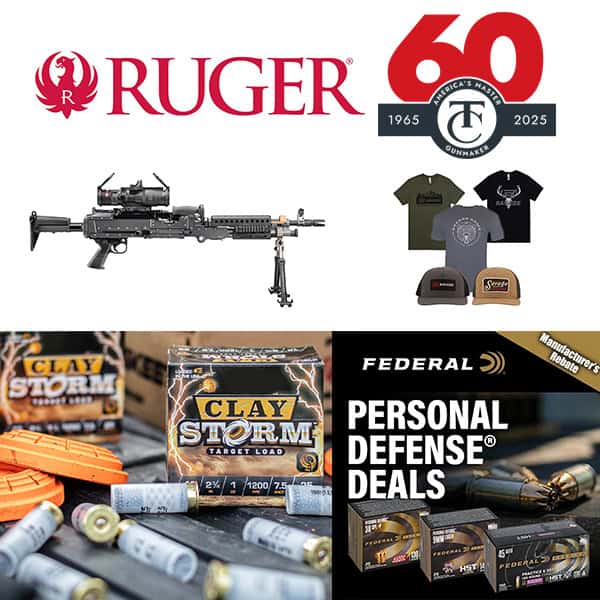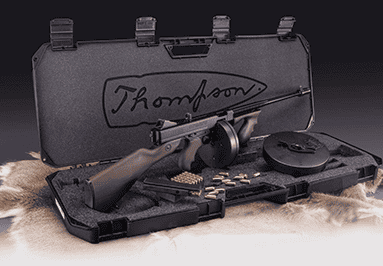Bottom Line Boost!
Increased Knife Sales Cut A Straight Path To Profits
With a fiercely competitive firearms market, savvy retailers are always looking to diversify their product inventory as a way to pad their bottom line, and many have already found boosting their cutlery sales is just the ticket. It’s no secret firearms owners are also knife users and with an abundance of manufacturers offering a broad range of segments — from sporting and utility to self-defense and tactical — you can easily tailor a cutlery strategy to meet your customers’ demands.
For insight we spoke with two manufacturers to get their thoughts on how retailers can take advantage of the lucrative cutlery market. Anne Reeve is the owner of Chris Reeve Knives (CRK), an industry leader in quality upscale folders. Craig Powell is the marketing director for TOPS Knives, known for making a wide array of affordable fixed-blade knives for the tactical, survival and sporting markets. These two companies couldn’t be more different in their offerings, but they are both highly successful in their niche of the cutlery industry.
Top Priorities
I asked our two experts what their top priorities would be for increasing their customers’ retail sales. CRK’s Reeve, a 30-year veteran of the U.S. cutlery industry, believes visibility is huge.
“Having knives on display in an area near where firearms are on display is paramount,” she shared. “If firearms retailers put their knives in a low-visibility corner of the shop they’ll only sell if customers know where to look — or if an associate is knowledgeable and passionate enough to ask and direct the customer over to the knife display to encourage a sale. Having a display of knives near the area where a gun sale will be rung up is also a great way to have a customer consider a knife with their purchase and an easy way to remind associates to offer these.”
TOPS Knives’ Powell is an avid outdoorsman and shooter who worked his way up to the executive level within the company. He believes treating a knife as a secondary sale to a firearm is a priority.
“Often when a person goes to buy a firearm the salesman sells the gun, then briefly asks about only gun-specific accessories before running the person up to the counter.” Powell noted. “I assume this is because they don’t want to lose the gun sale or put the customer off. But think about it: A customer buying a long gun for hunting season probably needs a knife too. At the very least, he’s got to gut his kill before carrying it out, if not completely break it down there in the field. And a person buying a gun for personal defense needs something else as a backup, right?”
As Powell explained, the ties between firearms users and their need for a knife for utility or backup are almost a given. If you’re taking advantage of this connection and the competition isn’t, guess who’s not padding their bottom line?
Reeve corroborated: “One of the best things a storefront retailer can do is to treat knives as an add-on to a gun sale like a scope, extra magazines, new upper, etc., and make sure to show these as an option when finalizing a firearm sale.”
Knowledge Sells Knives
Both Reeve and Powell believe a little bit of knowledge is an important key toward making a knife sale.
“Some basic training and education about knives goes a long way to increasing cutlery sales,” Powell informed. “And I’d keep it as simple as possible. As long as the employee has access to the basic specs of the knives they carry the only other training necessary would be about what different blade shapes are functionally good for. Don’t sell a tactical-style Japanese Tanto to a guy who needs a skinning knife, for example. Specs like steel type and hardness, handle material and sheath or carry options don’t need to be memorized — but the employees should know the difference between stainless steel and non-stainless, Micarta and G10 and the like.”
Reeve believes an educated staff is even more important when selling higher-end knives — just as it is when selling upscale firearms.
“Staff training is very important when it comes to knives at our price point,” she emphasized. “We encourage all our dealers to ask as many questions of us as possible so we can educate them in this manner, and we encourage them to visit our website. Selling a knife for under $150 is relatively easy, but to help customers understand why they’d want to spend $375 or more on a folder is another level of education altogether.”
Reeve has seen the benefit of employee education firsthand. “We’ve had smaller dealers more than double their output simply by having one employee who’s well-versed in how to sell CRK products, and our goal is for every shop to have a CRK expert on the sales floor.”
Track The Trends
We asked our experts about the trends they’re seeing in the cutlery industry and got a varied response — not surprising considering they specialize in different genres.
“One trend we’ve seen with our brand is the Tanto-blade profile seems to be gaining popularity,” Reeve noted. “We’ve seen a noticeable increase in sales of this blade type. Slip Joints are back in a big way for the industry as well as lightweight and durable EDC models, including carbon fiber faces and inlays.”
“Trends in knives are definitely hard to pick out because it’s such a wide-open field. I think because of this, specific types of knives aren’t necessarily dominating like they used to. These days the more specific models are going to sell well,” Powell relayed. “If I had to pick, I would say Karambits and small, thin self-defense blades great for EDC use are what people are asking for a lot right now.”
The best way to narrow the choices for your store’s cutlery stock is to identify your customer base and taper the selection from there.
If your customers are buying firearms in a medium-to-low price point, there’s a world of knives in the $20 to $100 price range. The higher the price point, the more the selection narrows. Regardless of whether you specialize in sporting firearms or tactical ones, the selection is also very broad and follows the same price versus selection curve.
The good news is the markup on knives averages from 25–50 percent depending on the competition in your locale — nothing to sneeze at in our highly competitive firearms market.
So, with everything presented here: Isn’t it time your increased your profits with an aggressive cutlery strategy?

